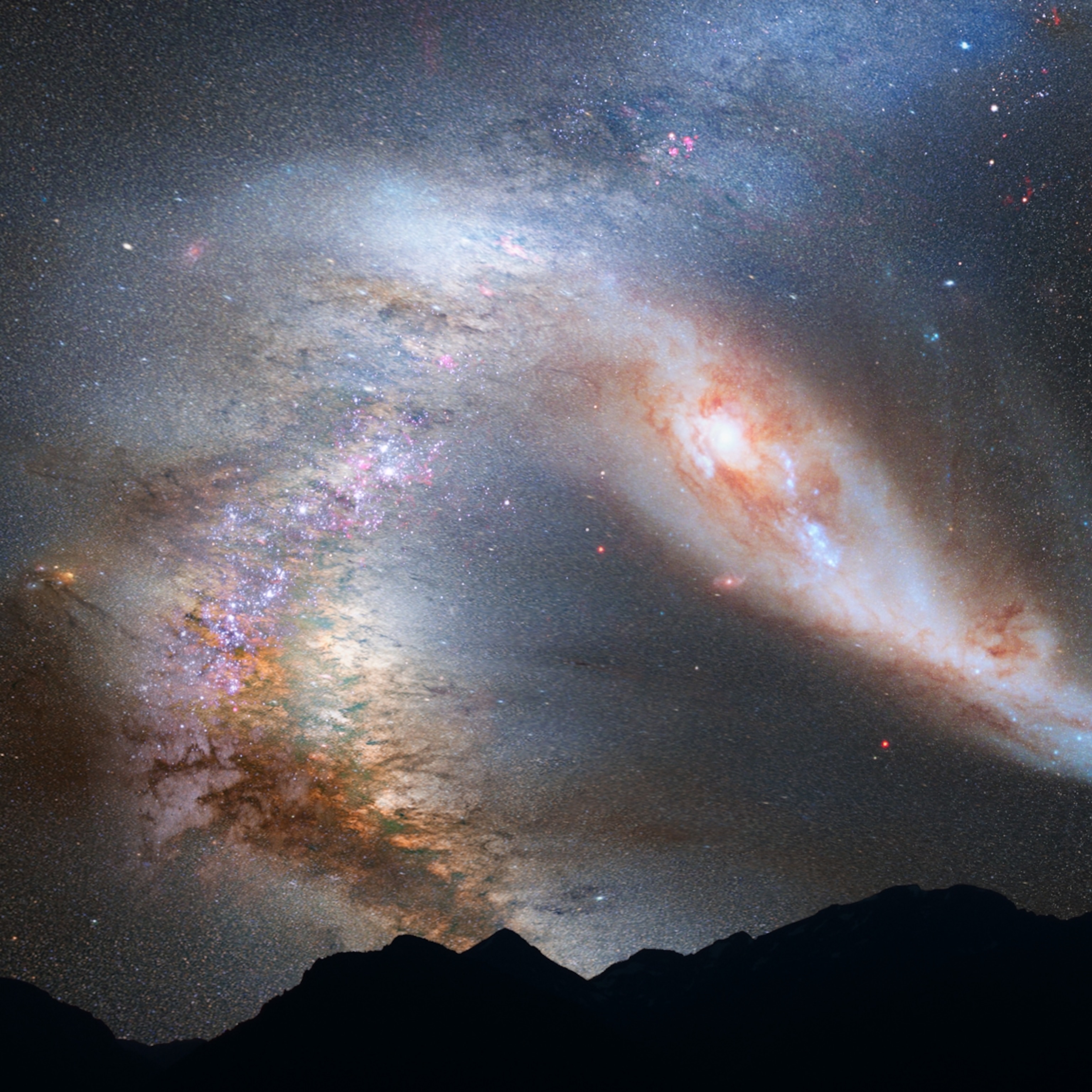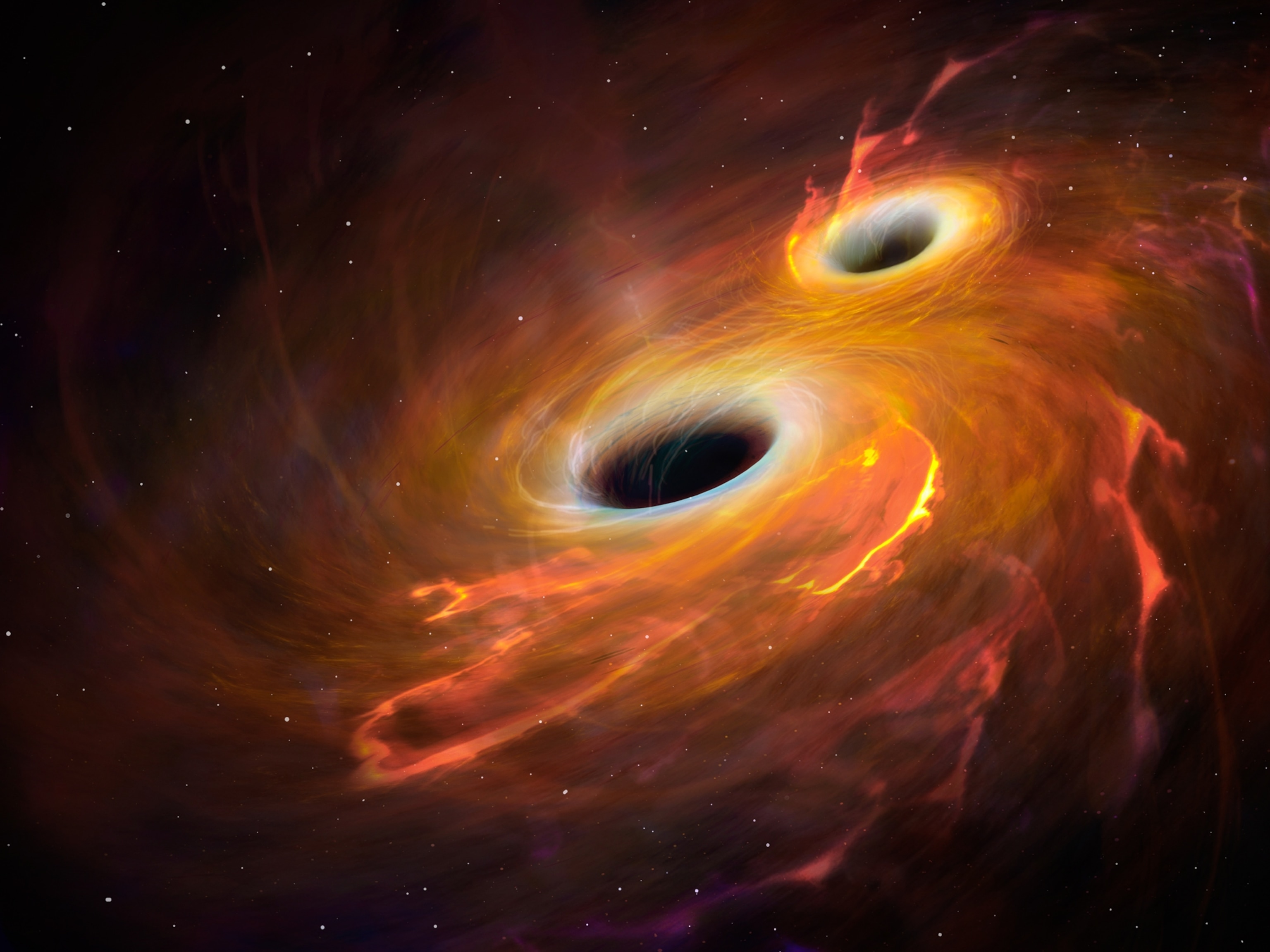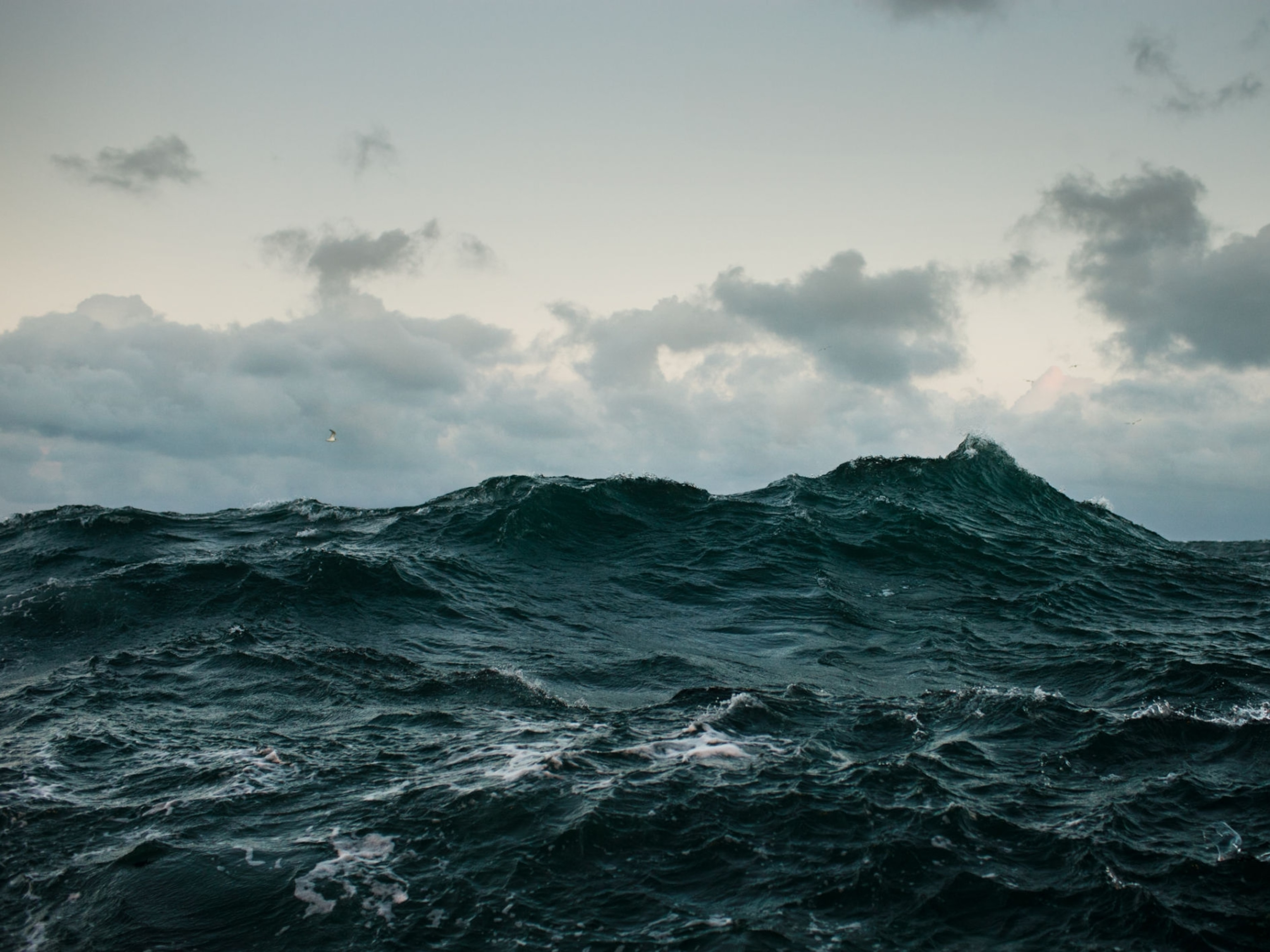
Found! Gravitational Waves, or a Wrinkle in Spacetime
Ripples produced by enormous cosmic events could open a new era in astronomy.
After nearly a century, the hunt for an elusive cosmic quarry is over. With the help of lasers and mirrors, scientists have directly observed gravitational waves, or wrinkles in the fabric of spacetime itself.
Two colliding black holes, one with 36 times the mass of the sun, and the other with 29, emitted those gravitational waves as they spiralled into one another and eventually collided.
From roughly 1.3 billion light-years away, these waves spread like ripples in the cosmic pond and washed over Earth on September 14, causing a minuscule but measurable change in the distance between four sets of mirrors—two in Louisiana, and two in Washington state.
In the last second before the black holes merged, they released 50 times more energy than all the stars in all the galaxies in the universe were releasing, combined.
“It’s the first time the universe has spoken to us in gravitational waves,” said David Reitze of Caltech during a press conference announcing the discovery on February 11.
To scientists monitoring that mirror-based experiment at the Laser Interferometer Gravitational-wave Observatory (LIGO), the signal received on Earth carried the characteristic “chirp” predicted to accompany the death and unification of two black holes.
“We can hear gravitational waves, we can hear the universe,” said Gabriela Gonzalez of Louisiana State University. “We are not only going to be seeing the universe, we are going to be listening to it.”
It’s a discovery that many say is likely to earn a Nobel Prize, and an announcement that has been hinted at for weeks, if not months, as tantalizing rumors of the LIGO team’s find circulated on social media.
Feel the Vibrations
First predicted by Einstein in 1916, gravitational waves are among the most paradoxical parts of his theory of general relativity. They’re produced by extreme events—such as colliding black holes, merging neutron stars, or exploding stars—that are energetic and violent enough to warp the tough, stiff fabric of spacetime, causing it to expand and contract.
But as you might imagine, those shifts aren’t normally perceptible. If they were, we’d see clocks running inconsistently and landscapes stretching and compressing all the time. Yet “gravitational waves are going through us right now,” says Alan Weinstein, who leads the LIGO team at Caltech. “I’d bet my left arm that’s true. And I’m a lefty.”
That means that as these exceedingly powerful waves sweep through Earth, their effect is, appropriately, exceedingly difficult to measure. “The stretching and squeezing of space is insanely small,” Weinstein says, noting that a passing gravitational wave might change the distance between two people sitting a meter apart by just 10-21 meters. That’s on the order of a millionth of the diameter of a proton, one of the particles that make up an atom’s nucleus.
But put two mirrors four kilometers apart, as LIGO has done, and the effect of that gravitational wave is on the order of a ten-thousandth of the diameter of a proton. “That, we can do,” Weinstein says.
LIGO uses two identical L-shaped detectors set a continent apart, in Livingston, Louisiana, and Hanford, Washington. For a gravitational wave signal to be counted as real, it must show up in both detectors, which are made of two sets of mirrors set perpendicularly to one another. A passing gravitational wave will stretch spacetime in one direction and compress it in another, causing an inconceivably small change in the length of the detectors’ arms, which is measured by a laser.
The apparatus is the most sensitive measuring device on the planet, and in addition to gravitational waves, can detect vibrations from passing trucks, earthquakes, lightning strikes six states away, signals from global positioning satellites, and electromagnetic pulses in Earth’s upper atmosphere. All that noise has to be filtered out to pick up the minuscule signal from gravitational waves.
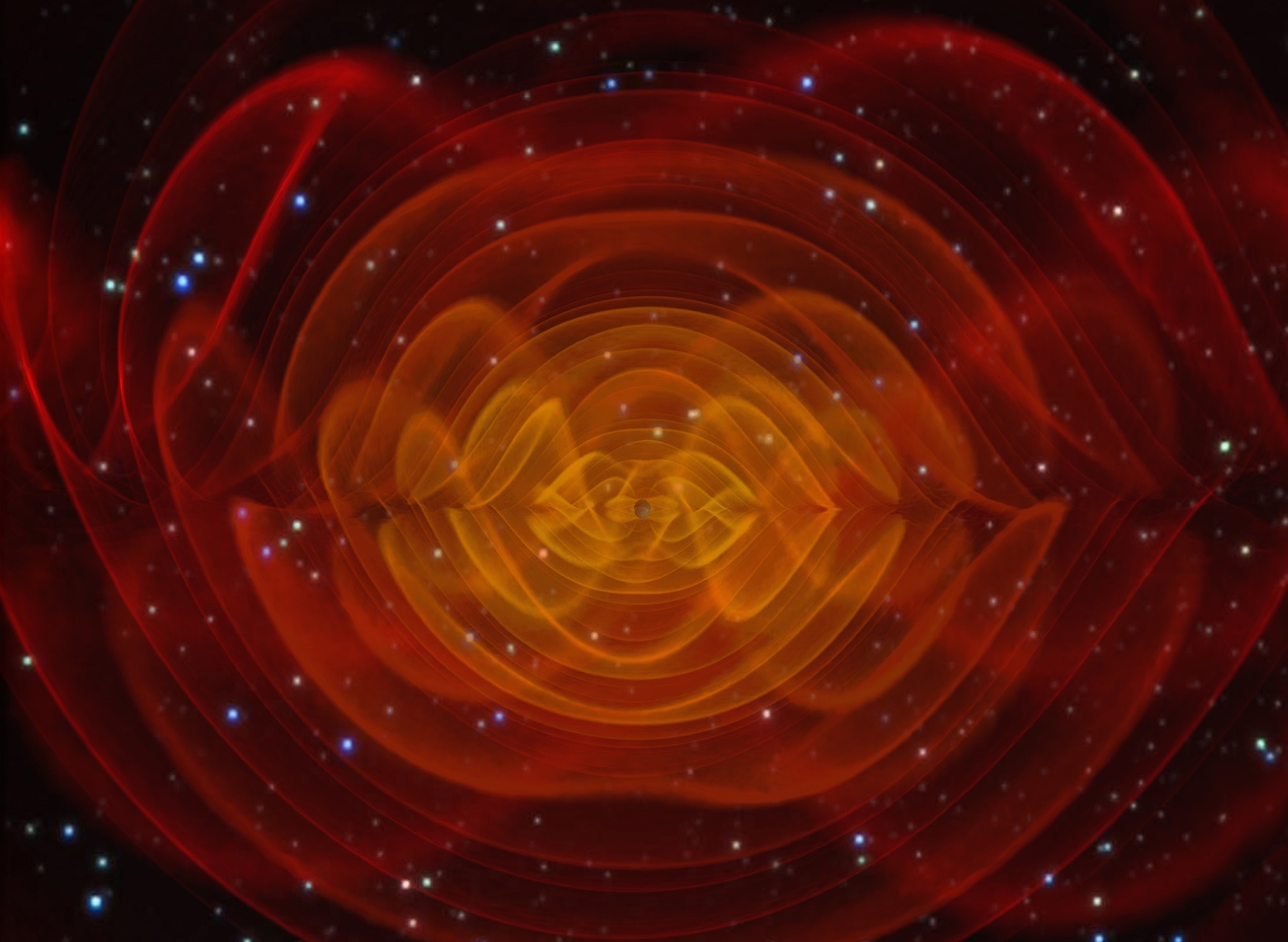
After decades of planning and political drama, the LIGO detectors first tried to hear gravitational waves in 2002; after eight years of quiet, the detectors were shut down in 2010 and further insulated against interfering noise.
So, when Advanced LIGO observations began again on September 18, scientists were optimistic that they’d come up with something.
In a strange twist of fate, they already had a detection in hand. The detectors had been up and running before the official observing run began, and had already bagged an extremely tantalizing signal. It arrived first at the detector in Louisiana, and seven milliseconds later, showed up in Washington.
“We were quite confident when this event came in that it was a good event. Were we surprised that it was too good to be true? Absolutely. My reaction was, wow. I couldn’t believe it,” Reitze says.
When Black Holes Collide
Using a handful of Einstein’s equations, scientists backtracked from the observable waves to determine what kind of astrophysical event was to blame. In this case, those equations suggested that two colliding black holes were the culprit—and that when they coalesced, they formed a new black hole, one with a little more than 60 solar masses.
Formed by the death and collapse of massive stars, black holes are among the strangest objects in the known universe—if you can call them “objects.” It’s easy to think of a black hole as being a clump of matter so dense that its gravity traps everything that gets too close, even light. But black holes are less “things” or “objects” than regions of intensely curved, bottomless spacetime. Thus, when two black holes merge, the event is anything but ordinary.
“It’s kind of a roiling mess of curved space, rapidly changing,” Weinstein describes.
In the collision LIGO detected, the two black holes had slowly spiralled around each other for millions or billions of years. But as the two bodies inched closer and closer, their orbits sped up until eventually, they were whirling around one another at roughly half the speed of light and emitting gargantuan amounts of energy in the form of space-warping gravitational waves.
Then the black holes merged. In the last second before that event, the whirling black holes emitted more energy than the entire universe emits in all forms of radiation. Once they’d merged, the resulting amalgamated black hole wobbled around for a bit before settling down, emitting what’s known as ringdown, or a kind of last gasp before going quiet.
It’s an impressive story, told by the infinitesimally small shifts in distance between mirrors on Earth.
“The data look freaking amazing,” says astronomer Scott Ransom of the National Radio Astronomy Observatory, who saw the team’s manuscript, which is published in Physical Review Letters. “Seeing the waves in the "raw" detector outputs, without any special statistical massaging, is more than almost anyone had hoped for.”
Scientists on the LIGO team are confident the signal is real; in fact, they calculated that such a convincing false alarm wouldn’t arrive more than once every 200,000 years. That’s not true for all the potential gravitational wave detections the team has collected so far. LIGO found at least one more candidate signal—on October 12—produced by merging black holes, but scientists can’t say for sure that it isn’t a false alarm.
New Era, Plus Other Searches
The discovery marks the first time scientists have directly netted gravitational waves, but it’s not the first proof of their existence. In 1974, Joe Taylor and Russell Hulse detected what was then a new, exotic kind of object: A binary pulsar, or two neutron stars whirling around one another. The team determined that the pulsars’ orbits were shrinking, and realized the only way that could happen is if gravitational waves were carrying energy out of the system.
The discovery, which proved without a doubt that gravitational waves exist, won Taylor and Hulse the 1993 Nobel Prize in physics.
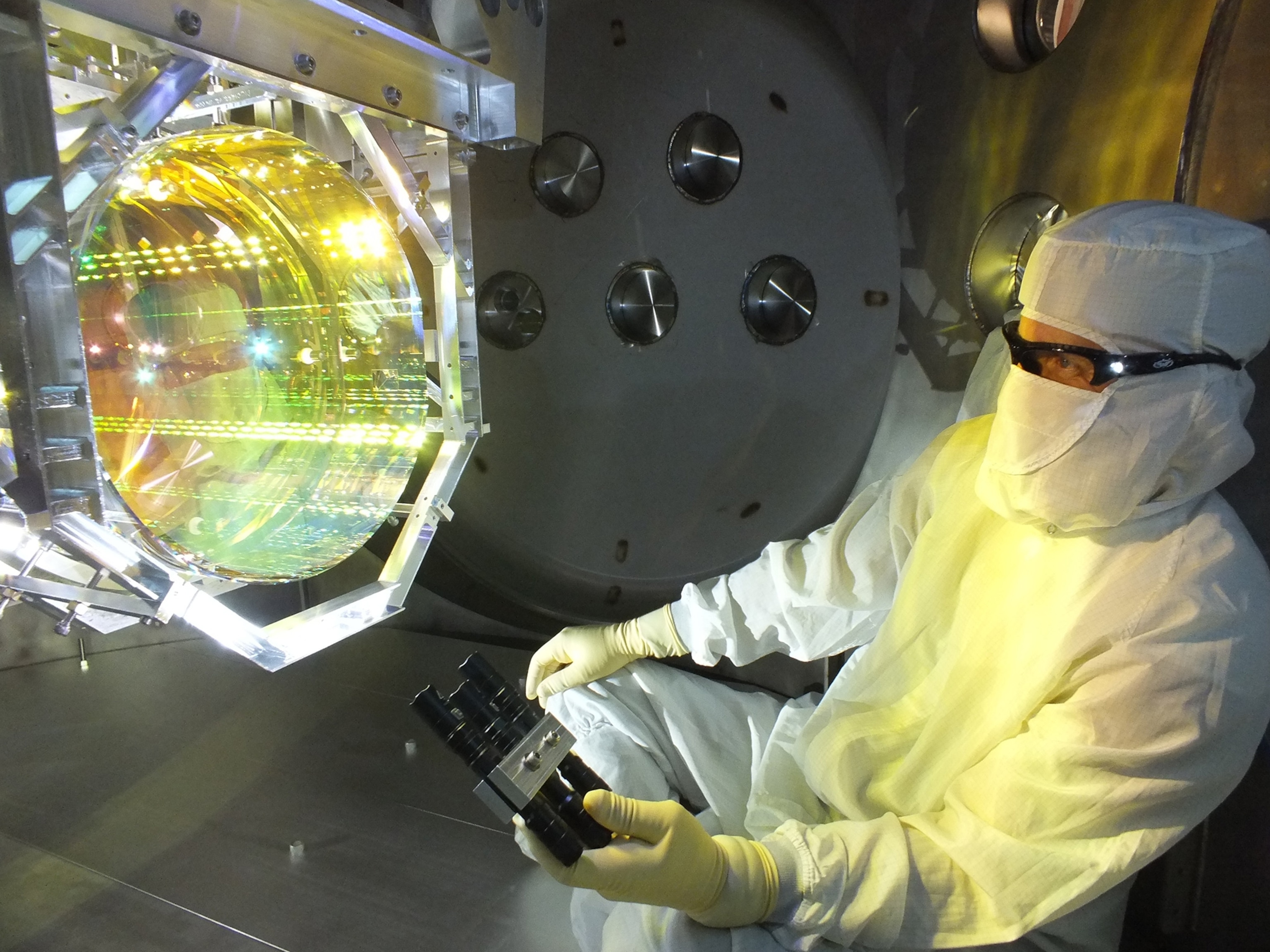
The difference here is the LIGO team has succeeded in directly observing gravitational waves on Earth—a discovery that will open up a new era in astronomy and help astronomers peer deeper into the cosmos.
Seeing the universe in gravitational waves could be similar to the first time scientists turned a pair of infrared, or X-ray, or microwave eyes toward the sky. For millennia, astronomy had been done in visible wavelengths; humans could see stars and planets, and watch them move across the sky. But the infrared universe is filled with the hot, dusty clusters where those stars are born, the X-ray universe with stellar corpses, and the microwave universe with the thermal remnants of the Big Bang. Observing the sky using gravitational waves will revolutionize astronomy in the same way.
“It’s a new way of studying distant objects and phenomena in the universe, which electromagnetic radiation hasn’t allowed us to get at very well,” says Taylor, an astrophysicist at Princeton University, using the example of black holes.”We’ve suspected these things probably exist, and we’ve seen the evidence for black holes in the centers of galaxies, and now we’re going to have some direct way of measuring them that is quite different from that.”
Not only that, in the coming decade, other experiments might also detect gravitational waves. One of those, called NANOGrav, uses millisecond pulsars—which keep exceptionally accurate time—as natural gravitational wave detectors. As waves pass through the pulsars, they briefly disrupt the timing of the dead star’s spin, leaving a telltale signature that can be traced across the sky.
Unlike LIGO, which is sensitive to gravitational waves produced by stellar-mass cataclysms, these pulsar timing arrays will detect the much longer ripples produced by spiraling supermassive black holes, the cosmic drains churning away in the cores of galaxies.
“We’re sensitive to the tens of thousands of years before those supermassive black holes merge because that’s when they’re emitting gravitational waves in our frequency band,” Ransom says. “We’re talking billions, at least hundreds of millions of solar masses here.”
Another proposed experiment would launch a gravitational wave observatory, called eLISA, into space, where it would be sensitive to waves produced by all sorts of astrophysical systems. And then there are the teams searching for primordial gravitational waves, produced during a period of rapid cosmic expansion in the early universe. In 2014, the BICEP2 team announced that it had discovered these gravitational waves, but the signal turned out to be a dusty fingerprint rather than an inflationary one.
It will be a while before gravitational wave astronomy becomes mainstream. But when it does, those extreme, invisible cosmic events that until now have lived in the realm of mathematics will step into the realm of the observable, populating the universe with a whole new set of mysteries to solve.
Follow Nadia Drake on Twitter and her blog on National Geographic’s Phenomena network.


